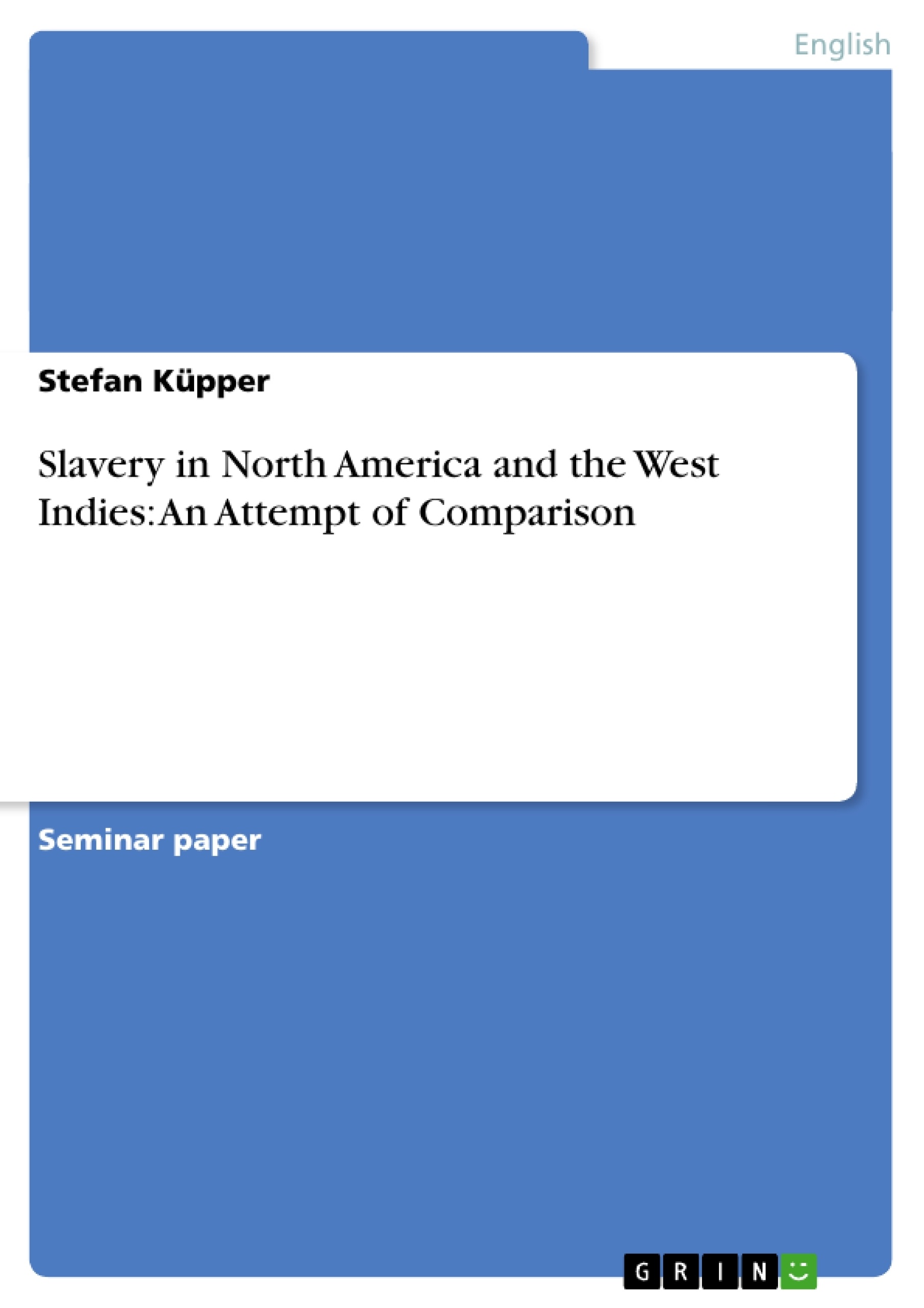When in 1619 the first 20 blacks arrived in Virginia, nobody could even guess what consequences would arise from this arrival. This event should be the beginning of a yoke of suppression of blacks lasting nearly 250 years in order to work for the “white man’s” fortune in the newly founded colonies in North America and the West Indies. In this “dark chapter” of history many of the slaves were driven to death by starving, exhaustion, beating or diseases. Legally they were not even considered as humans, but as mere properties.
Regarding the American and Caribbean Colonies, certain differences occurred in economies, life conditions and social structure of slaves. Consequently my research will deal with the description and the comparison of “black history” from the beginnings (early 17th century) until the end of slavery in America and the West Indies. After having a look at the historical background, I intend to examine some crucial questions, for instance: Why did slavery in America develop in a different way than in the Caribbean? Or: Why did so many elements of the African culture survive until today on the West Indies, whereas an “African-American Culture” developed in North America?
Inhaltsverzeichnis (Table of Contents)
- Introduction
- North America
- The Beginnings of Slavery until the War of Independence
- Changes in the ante-bellum Period up to the Civil War
- Slave Life and Culture
- The West Indies
- Historical Overview
- Slave Society and Plantation System
- Slave Resistance
- Comparison
- Conclusion
Zielsetzung und Themenschwerpunkte (Objectives and Key Themes)
This research examines the history of slavery in North America and the West Indies, comparing their respective developments and societal structures. It aims to understand why slavery in these regions diverged and how African culture persisted in the West Indies, while a distinct "African-American Culture" emerged in North America.
- The emergence and evolution of slavery in North America and the West Indies
- The impact of slavery on societal structures and life conditions in both regions
- The role of African culture in the development of both regions
- The development of racial discrimination and the justification of slavery
- The transition from indentured servitude to chattel slavery
Zusammenfassung der Kapitel (Chapter Summaries)
The chapter "North America: The Beginnings of Slavery until the War of Independence" traces the arrival of the first Africans in Virginia and the subsequent transition from indentured servitude to chattel slavery. It explores the changing legal status of enslaved people and the development of racial discrimination. This chapter also examines the economic factors that contributed to the rise of slavery in North America, including the availability of slaves and the demand for cheap labor.
The chapter "The West Indies: Historical Overview" provides a general historical overview of slavery in the Caribbean, focusing on the development of the plantation system and its impact on the lives of enslaved people. It also examines the various forms of slave resistance that emerged in the region.
The chapter "Comparison" offers a detailed comparison of slavery in North America and the West Indies, highlighting the differences in economic development, social structures, and the experiences of enslaved people in both regions.
Schlüsselwörter (Keywords)
This work delves into the history of slavery, exploring concepts such as indentured servitude, chattel slavery, racial discrimination, plantation system, slave resistance, and the development of African-American culture. It analyzes the historical factors and societal dynamics that shaped the experiences of enslaved people in both North America and the West Indies.
- Quote paper
- Stefan Küpper (Author), 2005, Slavery in North America and the West Indies: An Attempt of Comparison, Munich, GRIN Verlag, https://www.grin.com/document/145965




